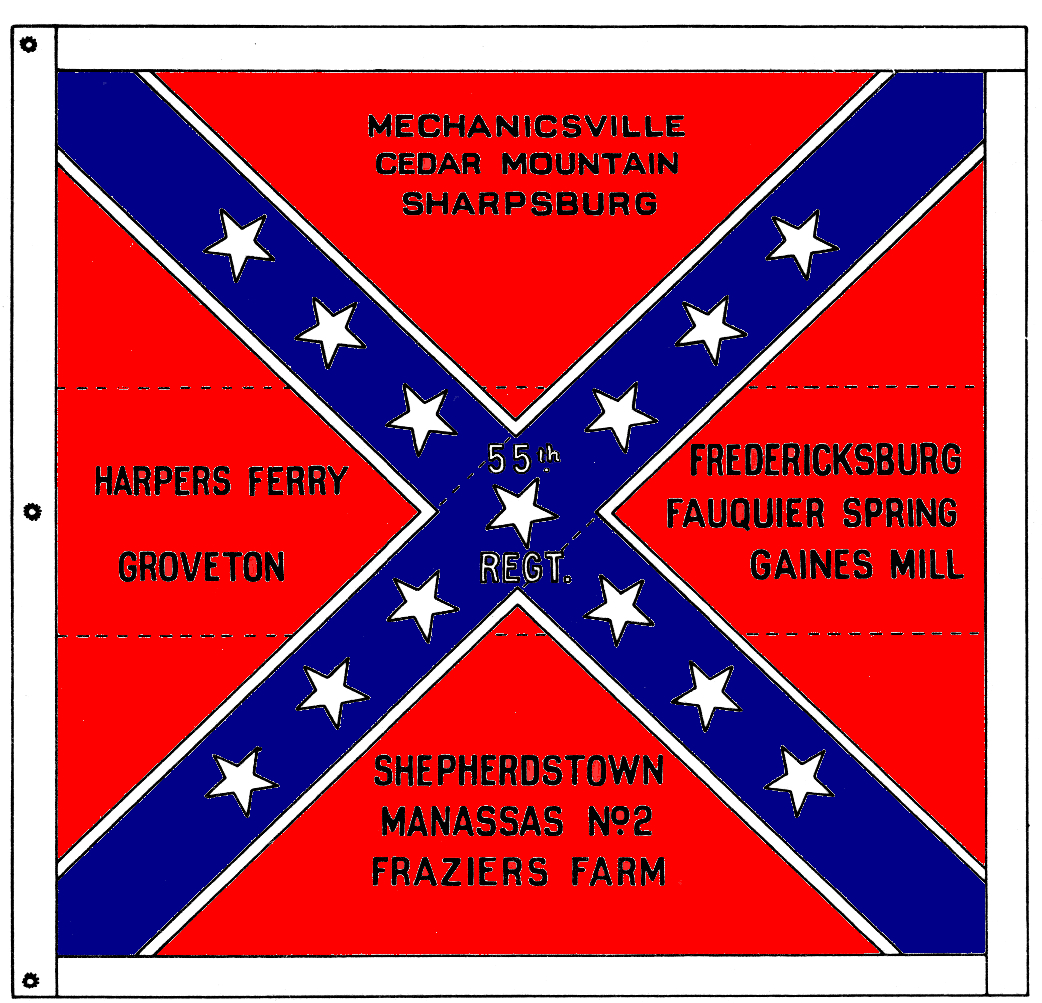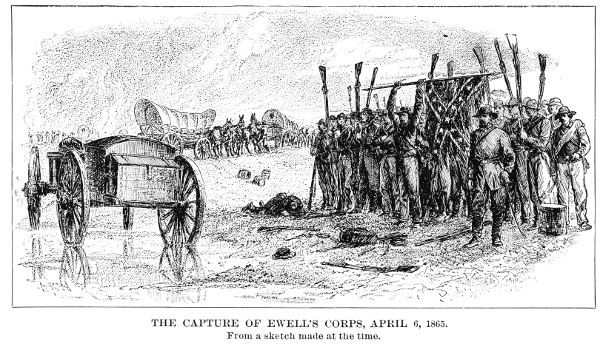The Battle Flags of the 55th Virginia
This early flag had been replaced by an Army of Northern Virginia ‘Southern Cross’ flag prior to the regiment first seeing action in June 1862. At Gaines' Mill, on June 27th, Color-Sergeant Thomas Fauntleroy was wounded while carrying this flag2. Pvt. George D. Nicholson of Co. C then carried it “far to the front” before being painfully wounded in the hip3. A third color-bearer was wounded in the wrist before Lt. R. D. B. Sydnor of the 40th Va. Inf. siezed it and rushed into the enemy's works clambering over one of their cannons on the way in4. Image 2 shows detail from the lower-lefthand forground of Allen Redwood's famous picture of the unit charging forward at Frayser's Farm on June 30th shows the flag as having a large central star with “55 VA” inscribed on it5:
Two further Army of Northern Virginia pattern flags carried by the 55th are in the possession of the Museum of the Confederacy. Both are approximately four foot square, made of red, blue and white British wool bunting, with white cotton stars and edging to the blue cross and a white cotton drill leading edge. Both have the unit number and numerous battle honors stencilled on the obverse. Judging from the battle honors, the former of these was issued early in 1863. It was carried to the front by Pvt. Tom Wright of Co. F while under devastating fire at Chancellorsville on May 3rd 18636. At Gettysburg it was carried by Color-Sergeant William T. Richardson until he was wounded in the chest and arm after which it was carried by Pvt. William G. New of Co. I until he, too, was wounded, in the hip, during the attack on July 3rd7. Sgt. William H. Costenbader of Co. E retrieved it and was probably carrying it when he, the flag and more than a third of the regiment were captured during the rearguard action Falling Waters on July 14th 1863. Costenbader later escaped from Point Lookout and returned to duty in 1864 (Image 3)8.
The third of the regiment's Army of Northern Virginia pattern flags replaced the one captured at Falling Waters and was probably issued in the late summer or fall of 1863 and carried at Bristoe Station, Mine Run and The Wilderness. It was captured at the latter place on May 5th 1864 after Color Sergeant William T. Richardson was again wounded in action. He was promoted to 1st Lt., Ensign on June 12th 1864, having “carried the Colors gallantly for some time”9(Image 4).
The regiment's final battle flag was presumably one of a number of unidentified flags surrendered at Sayler's Creek (Image 5) on April 6th 186510.
More than fifty years after the war, the regiment's best known soldier, Allen Redwood, penned a remarkably unsentimental assessment of his comrades' attitude to their battle-flag. In his opinion, they regarded military service as an unpleasant duty and went about it much as they would “any other disagreeable job”. The flag was viewed principally as a tool employed in the performance of this task. It was used as a guide when advancing and as a rallying point when forced back. Naturally, over time, they developed “respect and affection” for it, but it was essentially a soldiers' flag and “never at any stage the national flag.” Its traditions were of their own creation11.
Notes
1 The Children of Bladensfield, by Evelyn D. Ward, page 42.
2 CSR of George D. Nicholson, National Archives, microcopy 324, roll 962.
3 Colonel Mallory's report, O.R. Series 1, Vol. 11, pages 847 and 848.
4 Biographical sketch of Lt. R. D. B. Sydnor, Memorial, Virginia Military Institute, page 507.
5 Battles and Leaders, Vol.2, page 402.
6 [Captain Rennolds' account of Chancellorsville, Confederate Veteran, Vol. 5, page 52.
7 Casualties reported in the Richmond Daily Enquirer, July 16th, 1863.
8 Biographical sketch of William H. Costenbader in Virginia Biography, by Lyon G. Tyler, Vol. 4, pages 245 and 246.
9 CSR of William T. Richardson, National Archives, microcopy 324, roll 968.
10 Battles and Leaders, Vol.4, page 721.
11 Redwood article in Miller's Photographic History, Vol. 8, page 154.




